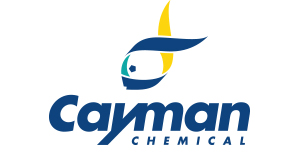ATB-337, CAS 912758-00-0
ATB-337, CAS 912758-00-0
SKU
CAY10277-25
Packaging Unit
25 mg
Manufacturer
Cayman Chemical
Availability:
loading...
Price is loading...
Formulation: A crystalline solid
Formal Name: 2-[(2,6-dichlorophenyl)amino]-benzeneacetic acid, 4-(3-thioxo-3H-1,2-dithiol-5-yl)phenyl ester
Purity: ≥98%
Formula Markup: C23H15NCl2O2S3
Formula Weight: 504,5
Shelf life (days): 1460
CAS Number: 912758-00-0
Notes: Hydrogen sulfide (H2S) is a naturally occurring gasotransmitter with vasodilator and inflammatory modulating activity.{15636,15971} Non-steroidal anti-inflammatory drugs (NSAIDs), such as indomethacin, diclofenac, and ibuprofen, are some of the most commonly used anti-inflammatory drugs available but exhibit significant side effects, particularly gastric damage, when used chronically. ATB-337 is a hybrid molecule of an H2S donor and the NSAID diclofenac.{16442} In rats, diclofenac at 10-50 µmol/kg caused significant gastrointestinal damage, whereas no damage was observed with ATB-337 treatment at the same dose. ATB-337 at 50 µmol/kg does not promote leukocyte adherence to vascular endothelium, an effect observed with diclofenac treatment alone. COX-1 and COX-2 were inhibited with similar efficacy by diclofenac and ABT-337. An increase in expression of the pro-inflammatory mediator TNF-α, as well as, the adhesion molecules ICAM-1 and LFA-1 were not observed in rats treated with 50 µmol/kg ABT-337, effects seen with equimolar doses of diclofenac. These results indicate that H2S-releasing derivatives of NSAIDs may prove to be more effective anti-inflammatory agents than traditional NSAIDs alone.
Formal Name: 2-[(2,6-dichlorophenyl)amino]-benzeneacetic acid, 4-(3-thioxo-3H-1,2-dithiol-5-yl)phenyl ester
Purity: ≥98%
Formula Markup: C23H15NCl2O2S3
Formula Weight: 504,5
Shelf life (days): 1460
CAS Number: 912758-00-0
Notes: Hydrogen sulfide (H2S) is a naturally occurring gasotransmitter with vasodilator and inflammatory modulating activity.{15636,15971} Non-steroidal anti-inflammatory drugs (NSAIDs), such as indomethacin, diclofenac, and ibuprofen, are some of the most commonly used anti-inflammatory drugs available but exhibit significant side effects, particularly gastric damage, when used chronically. ATB-337 is a hybrid molecule of an H2S donor and the NSAID diclofenac.{16442} In rats, diclofenac at 10-50 µmol/kg caused significant gastrointestinal damage, whereas no damage was observed with ATB-337 treatment at the same dose. ATB-337 at 50 µmol/kg does not promote leukocyte adherence to vascular endothelium, an effect observed with diclofenac treatment alone. COX-1 and COX-2 were inhibited with similar efficacy by diclofenac and ABT-337. An increase in expression of the pro-inflammatory mediator TNF-α, as well as, the adhesion molecules ICAM-1 and LFA-1 were not observed in rats treated with 50 µmol/kg ABT-337, effects seen with equimolar doses of diclofenac. These results indicate that H2S-releasing derivatives of NSAIDs may prove to be more effective anti-inflammatory agents than traditional NSAIDs alone.

 Deutsch
Deutsch










